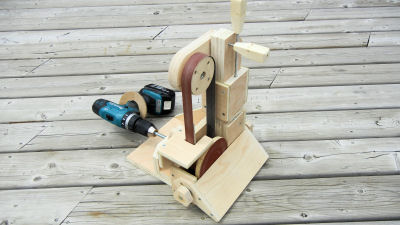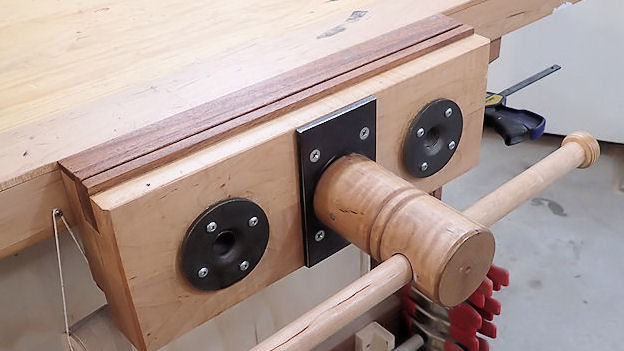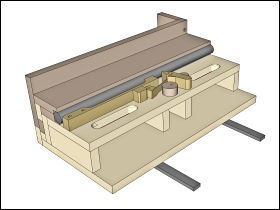A Plane Christmas Gift for John Homemade Woodworking Tools
by Don Heisz
A few months ago, I was in a second-hand shop. On a shelf behind the counter was what looked like an old hand-plane, not very big, and I could see the bottom of it was made from wood. I asked to look at it and, once it was in my hand, I could see that it was not complete. But I thought I could fix it up a bit and give it to my brother John for Christmas. We don’t always go out of our way to get each other gifts, but I thought it might be nice to get him something he didn’t already have. And I don’t believe he has a wooden plane:
.jpg)
.jpg)
As you can see, there was no blade in the plane when I got it. Also, the wedge is homemade and seems like it could have served no purpose. There’s no way it could have ever held the blade in place.
As a gift, a plane with no blade is a paperweight. So, out of a desire to make the plane complete, I made a blade. I found a worn out diamond blade at a construction site a couple of months ago and brought it home. The steel in that should be up to the task. I’m not out to make a masterpiece, after all. I really just want a basically functional plane:
.jpg)
.jpg)
I actually used the “wedge” that was stuck in the plane to mark the size of the blade on the steel. I then cut it out with a grinder. On the cutting edge, I cut on a 45 degree angle (roughly) to make shaping that just a little easier. Using a combination of grinder and sanding disc, I deburred the steel and gave the blade a bit of a sharpen.
I made a chip breaker for the blade, also. Really, that was just another piece of steel cut from the diamond blade, almost exactly like the cutting blade. I drilled an elongated hole in the blade and then drilled and tapped the chip breaker for a 1/4-20 nut, which I used to fasten both together. The plane was already routed out to receive such a nut. With the nut tightened, I ground the end of it flush to the surface of the chip breaker:
.jpg)
.jpg)
Of course, this would not stay in the plane by itself, and the “wedge” that came with the plane was truly useless. I think the plane originally had a cam-lock that held the blade in place. I, however, was not prepared to try to imitate such an arrangement. I decided I would install a rod for a wedge.
I have no brass rod at my disposal, unfortunately, but I do have a large collection of spade bits. I selected a premium one and cut it off to the proper length. I then drilled a 1/4 inch hole in the plane. This hole is located to keep a distance of about 3/16 inch between the blade/chip-breaker and the rod. I then used the drill press to install the rod, since it was slightly bigger than the 1/4 inch hole I drilled. I thought this would decrease the likelihood of the wood breaking in the plane:
.jpg)
.jpg)
The blade and chip breaker in place:
.jpg)
I then fashioned a wedge out of maple. I found a 12 inch piece of maple roughly the right width and thickness in my offcuts bin and cut the end on a very sharp angle. Then I used a belt sander and sanding disc to shape the wedge so it would fit snugly and securely under the plane rod. Once I was sure it was the right shape, I cut it to length and finished shaping it:
.jpg)
.jpg)
In order to make this plane truly usable, the bottom face should be jointed smooth. Running it over some sandpaper might be good enough, though. I did nothing with the bottom to preserve the colour of the wood. Also, the blade certainly could use a good tuning. However, the recipient of this gift is more than capable of making this better if he so desires. I imagine, however, that this will most likely be a decoration.
The fact is, while making such a thing is enjoyable, using it is a chore, especially when there are alternatives that hold their settings so much better. But who knows? Maybe a corner will need a bit of easing and this will be the handiest thing to use.
.jpg)
John says:
I did some searching and found that the plane appears to be a Stanley #23 wood-bottom plane, or transitional plane. They were made from 1870 to 1918, so this one has been around for a while!
The wood for the sole and knob is beech and the top is cast iron. Originally, it had all the parts that an all metal plane would have.
Thanks Don, I will use this plane and really appreciate the time and effort you put into making usable again.















